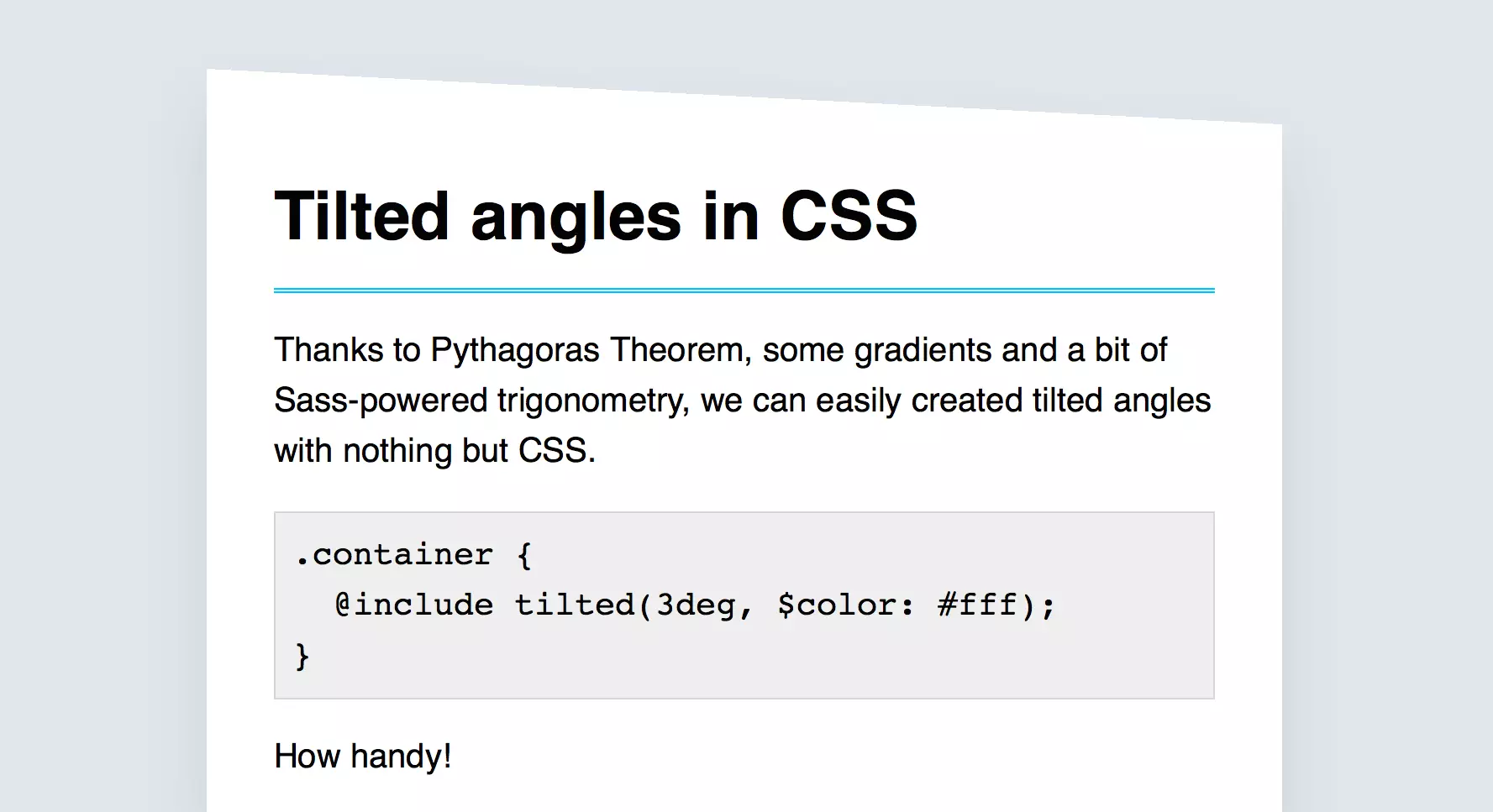
This article explores creating tilted angles in CSS using Sass, offering a sophisticated solution that avoids the limitations of other methods. Instead of using base64 encoded images, skewed pseudo-elements, or the Angled Edges library, this approach leverages a clever gradient technique.

Traditional methods like base64 images hinder customization, while skewing is cumbersome, and the Angled Edges library requires fixed dimensions. This new method uses a half-transparent, half-solid linear gradient applied to an absolutely positioned pseudo-element. The gradient's angle dictates the tilt.

A Sass mixin encapsulates this, accepting the angle and color as parameters. The key challenge lies in dynamically calculating the pseudo-element's height based on the angle. This is solved using trigonometry and the Pythagorean theorem.

A Sass function, get-tilted-height(), performs this calculation. It uses the sine function and the Pythagorean theorem (b = √(c² - a²)) to determine the height (b) based on the angle (B) and a width of 100%.
The tilted() mixin then applies the calculated height (via padding-top) to the pseudo-element, along with the gradient and color styling. The container element receives the background color for consistency. The mixin uses position: relative on the container to establish the positioning context for the pseudo-element.
While this method is more complex than others, it offers greater flexibility and avoids the drawbacks of simpler approaches. The article concludes by suggesting potential improvements, such as handling existing ::before pseudo-elements and allowing bottom tilting. The author also notes that using JavaScript-based Sass functions (via Eyeglass or Sassport) could enhance the solution.
Frequently Asked Questions (FAQs) about Tilted Angles in Sass (Summarized):
The FAQs section provides explanations on using Sass's sqrt function for angle calculations, the purpose of tilted angles in Sass, the availability of other mathematical functions, string-to-number conversion, common uses of sqrt, creating diagonal lines and circles using sqrt, using sqrt with variables, and the function's syntax and combination with other functions. These are all answered concisely within the original text.
The above is the detailed content of Tilted Angles in Sass. For more information, please follow other related articles on the PHP Chinese website!




